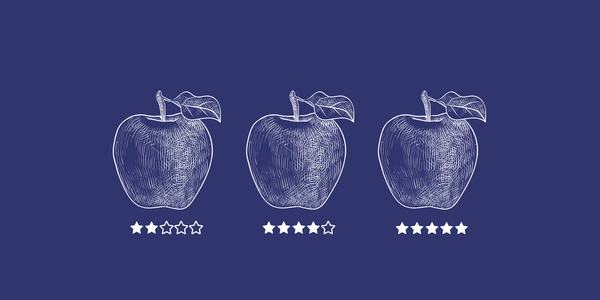How to find your target audience: step by step guide
Picture this.
You have a severe peanuts allergy. Safe to say, no matter how much a peanut butter company spends on advertising, you will never buy their product.
Let’s say that, in this hypothetical scenario, this company’s marketing team is already aware of this, so they’ll take one of these two routes:
- Ignore you as a prospective buyer (and add you to their negative audience saving them a lot of money on promotion)
- Develop a nuts-free alternative that will satisfy your need and expand their market at the same time
Both routes are plausible, but they’ll know only - you guessed it - when they assess the target audience.
Unfortunately, in business, a target audience is usually not as obvious, especially when it comes to our ventures. As humans, we tend to have a lot of unconscious bias: assumptions and theories based on our internal desires instead of data. If you ever thought “they must be interested in my offer, but they’re not buying” - it’s very likely you’ve experienced this yourself.
Luckily, there’s a pretty straightforward way of identifying your target audience.
By the end of this exercise, you’ll know exactly who your perfect audience is, where they are (online and offline), and why they are there.
What is a target audience?
A target (or targeted) audience is a pool of people who have the potential of becoming your customers at some point in time. It plays a key role in building a business strategy and crafting effective marketing campaigns. As such, defining your target audience should be one of the first things you should do for your business.
A well-defined target audience will help you:
- Understand what drives your audience’s decisions
- Create effective marketing communications
- Improve conversions and increase sales
- Feed information into your product development, or offer creation
- Increase retention and reduce customer churn
Bad targeting will get you to waste your time and money trying to attain audiences that have low or no likelihood of ever converting.
But first…
“What about the buyer persona (a.k.a customer avatar)?”
I’m glad you asked!
A target audience does not equal a buyer persona.
A buyer persona, also called customer avatar, or ideal customer profile is probably the most popular audience-related term that gets thrown around the internet, quite a lot. It stands for a semi-fictional representation of a member of your target audience and comes very useful for more targeted aspects of sales, marketing, offer or product development, and even customer support.
But.
The personas are just a part of the story. They are a picture, within a picture, within a picture.
There are three market-related terms that you need to know as you grow your business: target market, target audience, and buyer persona.
A target market (with the emphasis on the word market) should be viewed as an entire ecosystem where you’re doing business. It’s everyone that could be your audience, but also your competition, even your supply chains. The target audience is a segment of that target market, a group of people that have a good likelihood of becoming your customers, and the personas are fictional profiles of members representing an even smaller segment of that audience.
It looks something like this:
So, you see why defining personas without having the analysis of your audience is like cutting dough before you bake the bread, or counting chickens before they hatch. (Wisdom of the early marketers.)
There will be a separate post on personas soon, so make sure you subscribe.
I highly advise getting a piece of paper at this point and treating the rest of the blog as a mini-workshop.
How to define your target audience: step by step
In my previous blog, I wrote about general marketing best practices, and defined target audience was at the top. (OK, second place...)
First, let’s make sure you remove the rose-colored glasses and put your critical, the “we’re about to hit it” goggles on. We need to remove the possibility of that unconscious bias seeping into our findings.
NOTE: I’ll list all of the useful resources at the end of the blog. Let's GO!
Step 1: collect demographic information about your *presumed* audience
I used the word presumed because it’s important to keep in mind: unless you’ve been in business for years and have already done some preliminary homework, your desired audience might turn out NOT to be a right fit for your products or offers, or vice versa.
If this happens, you can always adjust the targeting, and tweak the offer to match the needs of your target audience better. It’s a necessary part of the journey. Companies that profited during, or bounced backed quickly after the pandemic were the ones that revisited their audience targeting and adjusted their offers in response to the changes in demand. Gold.
The core demographics information you want to know about your target audience:
- Age range
- Location
- Race, ethnicity
- Gender
- Language
The rule of thumb is, your targeted audience might have some sub-segments that you’ll want to document. For example, you could say your audience is 80% 24 - 35 of age, and that they’re 50% located in the USA, and 50% in the European Union.
If your business is tied to a location, like a physical store, restaurant, catering service, or a florist, then narrowing the location down to a city, or even a neighborhood will be very useful.
In most cases, your service or product might require you to dig a bit deeper for the second set of data, like:
- Marital status
- Sexual orientation
- Education level
- Employment status
- Industry (useful for B2B)
- Purchasing power (e.g. income, spending trends, etc.)
These are easier to collect after you’re done with the main group, as it narrows down your research from the entire world to a backyard.
If you’re a hardware store owner, you might not need to know the marital status of your customers, but knowing their purchasing power will allow you to price your products better. And if you’re developing a job board app, you’ll definitely want to know the ratio of employed to unemployed people in your target market.
Step 2: collect psychographic information
Don’t let the word psychographic discourage you.
It’s just a fancy label for personality traits, sentiments, and tendencies that will help you create a multi-dimensional picture of your target market. Depending on your market, this is the place you can really get creative, especially if you’re planning to go niche.
Some of the most popular data points are:
- Personality traits (e.g. extroversion, introversion, openness, etc.)
- Lifestyles
- Interests
- Values and beliefs
- Hobbies
- Habits and preferences
- Lingo
It’s also important to grasp the human element in a social setting, so make sure you take a note of:
- Communities or associations
- Hot topics
- Common enemy (or common hero) your audience shares
If you are a mobile gaming company, you know your audience loves games, but knowing their values, hobbies (including existing games they play) and lingo will help you tailor a very effective message. And if you’re an online yoga instructor, you’ll want to know what hot topics are discussed, what are the core interests of your audience, to build a community about it.
Step 3: analyze your competition
Competitor analysis is one of my favorite topics, and I plan to write an extensive post about it (with downloadable templates) soon, but here’s a short version.
Competition is your frenemy and can give you an intimate insight into the state of the market, your audience, and their financial standing, just by the way they interact with their audience.
You’ll want to:
- Check their website and understand their offers in detail
- Make a note of their pricing strategy (including discounts)
- Look through their social media profiles, see what they’re posting, how they respond, does the audience engage
- Find reviews and see what are people loving or hating about their service
I like to group competitors into two buckets: direct and indirect.
Direct competitors are those that speak to a largely overlapping audience. Their offers will mirror your key products or services, and your job is not only to dissect their offer, messaging, and even branding but to identify key differentiators that you can leverage for your business.
Indirect competitors can also be considered alternatives to your offers. They might now have one specific product that matched your catalog perfectly, but they might be an alternative choice depending on many factors. Think Peloton, the at-home exercise bike manufacturer. Even though they are producing bikes, they are a strong alternative for all those at-home exercise enthusiasts that might otherwise invest in more traditional gym equipment. They even compete with a lot of club offers as well!
Pro tip: clip your findings into a document and keep it with the rest of your research. Screenshots can be incredibly useful visual material to revisit over time.
Step 4: pull your data together and organize it
Helps if you visualize it.
You can do it in a simple doc, but you can also put it in a sheet (popular with marketers), a deck, on a whiteboard, an online tool like Miro, or a combination of these (popular with me). Miro has handy templates that can help you organize your notes pretty easily, and you can adjust them further to your needs.
Keep it intuitive. Data needs to have a specific purpose: informative, inspirational, or to provoke further research. From there, you want to start concluding. Remember that it doesn’t have to be all positive. Sometimes, this research points out a mismatch with our intended audience and sends us back to the drawing board, which is perfectly normal. It’s what it’s meant to do.
Things you’ll want to give a bit more love to:
- Who is your audience based on demographics data
- What your audience likes or dislikes
- Where your audience spends time (social media, gyms, parks)
- Why they chose to spend their time at those places (community, convenience, pricing)
There is no one-single-best way to do this, but placing all your research findings on the left and conclusions on the right wherever possible with help keep your notes and thoughts organized.
Step 5: bonus points - build personas for specific campaigns
Personas are a fun and pretty useful way to narrow down your target audience. B2C and consumer goods absolutely have to have them. For B2B, the benefits can be pretty limited, especially for global companies or digital products, but if your resources allow it, personas can help create high-converting marketing campaigns for niche audiences, as well as build strong objection handling scenarios.
We’ll dig deep in a separate post, so don’t forget to subscribe.
You definitely want personas if you:
- See multiple segments of your target audience that requires separate approaches in sales and marketing
- Plan to run different types of campaigns for them
- Need to define scenarios for your sales teams to help them prepare for handling common objections
As you build these customer avatars, remember to draw all of the data from your audience research, and use the competitor research as an additional source of truth.
And there you have it!
You’ve successfully finalized your target market research and (hopefully) analysis! If you want to learn more about this topic, feel free to let me know.
Oh, and here are some goodies for your research:
Demographics
USA Demographics Information by Candid (A-mazing resource.)
EU Demographics Research by Population Europe
Worldometer - statistical data aggregator with fresh data about world population
Psychographics and trends
Gartner Reports (one of my favorite free resources)
Other statistics resources:
Statista - statistics and reporting company with a freemium model available
Market Research.com - wide range of free white papers and ebooks
We Are Social - digital marketing reports with juicy social media usage statistics




